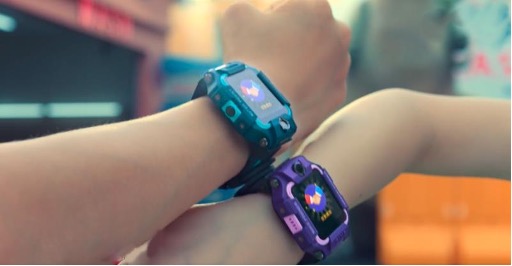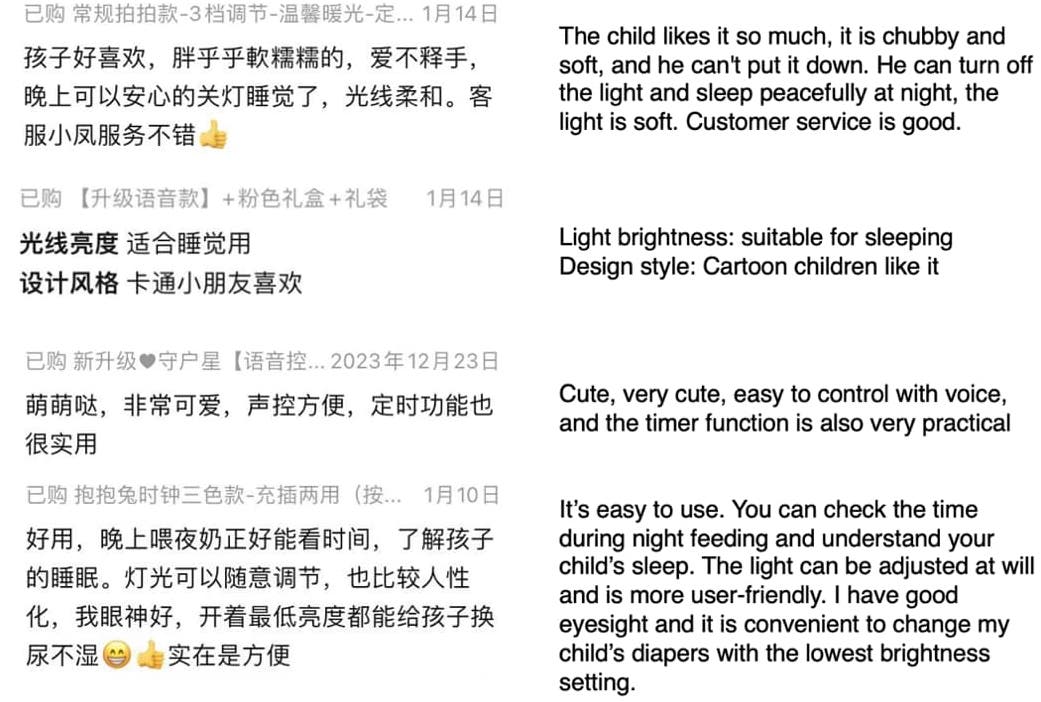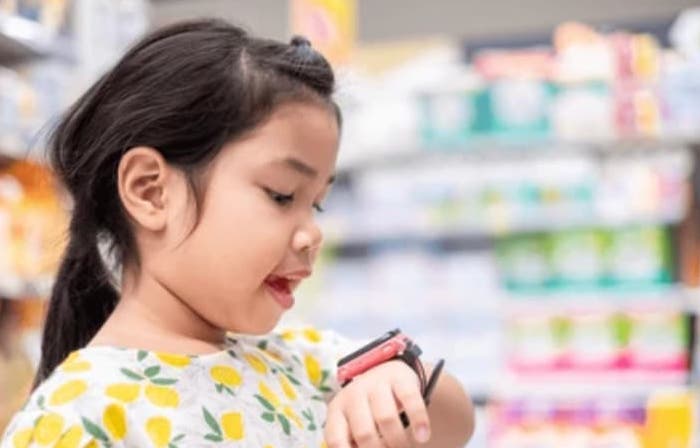In the ever-evolving realm of technology, the impact of tech gadgets on kids in China is becoming more noticeable. From the widespread adoption of smartwatches designed with safety features to the emergence of educational smartphones and interactive nightlights, children’s tech gadgets have evolved, shaping the digital experiences of the youth in the country.
Download our China luxury market report

The rise of children’s smartwatches in China: market trends, key players, and government initiatives
Among the tech gadgets for kids in China, smartwatches have been becoming increasingly popular, emerging as a leading choice among parents and children alike. With nearly one in three children aged 5 to 12 owning a smartwatch, these devices have penetrated over 50% of urban areas in China, marking a significant trend in the country’s tech landscape. The most popular brand on Taobao is XTC (小天才), which sells nearly 10 different models of smartwatches for kids, ranging from RMB 398 to 1,599. One of its most popular models is the Q2A, sold at RMB 599, which has over 300,000 sales on Tmall as of January 2024. In the second quarter of 2023, XTC accounted for 21% of China’s smartwatch market, just after Huawei and before Apple.
| Most popular brands | Price range (in RMB) |
| XTC 小天才 | 398-1599 |
| Xiaoxun 小寻 | 249-699 |
| Xiaomi 小米 | 299-999 |
| Shen Tong 神童 | 75-219 |
| Huawei 华为 | 458-798 |
The role of smartwatches in China’s ‘Smart Campuses’ initiative
The Chinese government generally encourages the adoption of smartwatches for children, emphasizing their importance in ensuring child safety. In 2019, the Guangzhou government distributed GPS tracker watches to 17,000 elementary school students across more than 60 schools. These watches, equipped with microchips guided by China’s Beidou navigation system, allow parents to receive real-time locations of their children within a 10-meter radius on their smartphones. In case of emergencies, children can use a single button to call their parents. This initiative aligns with Beijing’s broader vision to establish ‘smart campuses.’ Moreover, the watches go beyond location tracking – they incorporate features such as a water hazard alert, designed to remind parents to be vigilant around bodies of water and contribute to preventing drowning accidents.
Xiaotiancai (XTC): dominating the children’s smartwatch market with innovative social features
Xiaotiancai (XTC, 小天才) has positioned itself as a leading player in the smartwatch market, with a notable focus on catering to 4 to 15-year-olds. One of the key elements contributing to XTC’s significant market share is the integration of its proprietary Weiliao (微聊) messaging app. By allowing individuals to register as friends, exchange messages, and create groups simply by placing their XTC smartwatches in proximity to each other, XTC has created a distinct and engaging social platform. The exclusivity factor embedded in XTC’s communication ecosystem, where the app only permits interaction with other smartwatches of the same brand, has played a pivotal role in expanding the market reach of XTC.

Beyond safety to health monitoring in the post-pandemic era
Smartwatches designed for children have evolved beyond basic functionalities like GPS tracking and calling parents, incorporating advanced features that cater to health monitoring. Watches can send real-time health notifications to parents, alerting them if their child exhibits abnormal body temperatures. This feature has gained significant traction, especially in the context of health-conscious parents navigating the challenges of sending their kids back to school after prolonged pandemic lockdowns.
A province-wide ban on smartwatches and electronic devices in schools
In 2021, the Chinese Ministry of Education issued a directive generally prohibiting the presence of smartphones in schools for children. While wearing a smartwatch is still allowed in most provinces, the Fujian government took a more stringent approach in September 2022, becoming the first province to explicitly ban children in kindergartens, elementary, and junior high schools. According to the provincial guidelines, children may bring smartwatches to school only with prior government approval, and these devices will be subject to school management. A provincial official emphasized that the tech gadgets for kids in schools could negatively impact children’s normal learning and overall mental and physical well-being.
Smartphones for kids amidst regulatory shifts in China’s tech landscape
Baidu’s Xiaodu Qinghe: a smartphone for kids with AI education focus
In May 2023, Baidu Inc.’s smart speaker division, Xiaodu Technology, introduced a smartphone designed specifically for children named Xiaodu Qinghe. The phone offers AI-powered tutoring powered by Baidu’s ERNIE Bot, English language training, and interactive learning support tailored for primary and middle school students. The smartphone comes pre-installed with complimentary learning resources, including over 1,000 digital textbooks and an extensive collection of over 30,000 classes covering various subjects. Additionally, it features Baidu maps, adding another layer of functionality to enhance the user experience. Introducing Xiaodu Qinghe as its inaugural AI-focused smartphone, Baidu may face challenges in terms of establishing effective retail channels and building brand recognition in this competitive market.
Regulatory proposal sparks market reaction: impact on tech stocks
In August 2023, the Cyberspace Administration of China, the country’s primary internet regulator, put forth a proposal outlining restrictions on children’s screen time. The proposal mandates that all mobile devices and applications integrate a “minor mode” limiting daily screen time to a maximum of two hours, depending on the user’s age group. Those under 18 would be banned from accessing their screens between 10 p.m. and 6 a.m. when the mode is active. Additionally, users across all age groups would receive reminders to take breaks after 30 minutes of device usage. The proposed screen time limits are as follows: children under eight would be restricted to 40 minutes per day, those aged eight to 16 would have a one-hour screen time limit, and teenagers between 16 and 18 would be allowed two hours per day.
The Hong Kong-listed shares of several prominent Chinese internet companies experienced significant declines following the announcement of the new regulations. Tencent, the operator of WeChat, saw its shares close approximately 3% lower. Video-streaming app Bilibili recorded a 7% loss, while rival Kuaishou closed down 3.5%. Weibo, a platform similar to Twitter, concluded the trading day with a 4.8% decline in its share price.
Nightlights for children: warm glow and smart features
Nightlights designed for children have gained significant popularity on Chinese e-commerce platforms, with many of them garnering several hundred thousand sales. These nightlights vary from basic illumination to more sophisticated models. Among the popular features are color-changing capabilities, timers, voice command functionality, and integrated alarm clocks. The nightlights also come in both wireless and plug-in versions. Many of these products are designed with appealing elements such as cute animals or stars to captivate the interest of children.

Social listening on Taobao reveals that users have a strong preference for the warm light emitted by many of these nightlights. The warm glow is considered ideal for creating a soothing ambiance that is not too bright, making it conducive for falling asleep while still providing enough visibility in the dark. The cute and soft designs of these nightlights are also highly appreciated by users. Additionally, the extra features such as voice control, timers, and motion sensors contribute to their appeal.
Interestingly, beyond purchasing these nightlights for their children, consumers, especially young moms, buy them to make night-time activities like feeding or changing their babies safer and accident-free. Furthermore, some users even purchase these nightlights as thoughtful gifts for their friends, indicating their popularity as versatile and well-received products in various contexts.

Tech gadgets for kids in China: main takeaways
- China sees a rising trend with one in three children owning smartwatches. XTC dominates the market, offering smartwatches with messaging functionalities.
- The Chinese government distributed GPS tracker watches for real-time child location to 17,000 children in Guangdong.
- Smartwatches also have health monitoring beyond basic features, which sends real-time health notifications to health-aware parents.
- Baidu introduced an AI-focused smartphone for kids with educational features and resources.
- Regulatory proposals on children’s screen time impacted major tech stocks.
- Nightlight features popular on e-commerce platforms are warm glow, smart features, and cute design.




